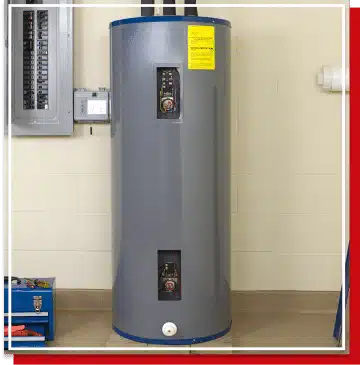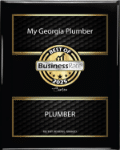
What’s Actually Inside Your Electric Water Heater
Your water heater probably doesn’t get much thought—until it stops working. But it’s doing a lot behind the scenes, every time you take a shower, run the dishwasher, or do a load of laundry. It’s not just a big tank of hot water. It’s a system. And knowing how it works can help you spot issues early and keep it running longer.
Let’s open it up and take a look—without getting too technical.
Steel Shell and Insulation
That metal cylinder in your garage or utility closet? That’s just the shell. Inside, there’s a layer of foam insulation that helps trap heat, so the water stays hot longer without the elements constantly kicking on.
Simple, but it works.
The Tank
The tank’s what actually holds the water—usually 30 to 80 gallons depending on the size. It’s lined with glass or enamel to help fight off corrosion, but it’s not invincible.
Water comes in at the bottom, gets heated, and the hot stuff rises to the top where it exits when you turn on the tap.
Dip Tube
Cold water doesn’t just dump in from the top. The dip tube sends it down to the bottom so it can heat up before mixing in. If this tube cracks or breaks, your water heater won’t work right—you’ll start getting lukewarm showers no matter how high the thermostat is set.
Broil and Bake Heating Elements
Electric models don’t use flames—they use heating elements. We call ‘em Broil and Bake, like your oven.
-
The top element (Broil) kicks on when you use a bunch of hot water.
-
The bottom one (Bake) keeps things steady, handling the day-to-day reheating.
If one of these burns out, you’ll notice—usually with a big dip in water temperature or it just taking forever to heat back up.
Thermostats
Each heating element has its own thermostat. They monitor the water temp and turn the elements on and off to keep things where you want it.
Most are set to 120°F out of the box. That’s warm enough for comfort and safe enough to avoid burns.
Anode Rod
This one doesn’t get enough credit. It’s a metal rod inside the tank that’s designed to rust—instead of the tank. It sacrifices itself over time by attracting corrosive minerals in the water.
If it gets used up and you don’t replace it, those minerals will start attacking the inside of the tank. That’s how you end up with rust-colored water—or a tank that fails from the inside out.
Expansion Tank
If you’ve got a closed-loop plumbing system, meaning water can’t flow backward into the main supply, you need one of these.
When water heats up, it expands. That creates pressure. The expansion tank gives that pressure somewhere to go. No expansion tank? That pressure gets dumped onto your heater and pipes. Not great.
T&P Valve
Short for temperature and pressure relief valve. This is the “don’t let it explode” part of the heater.
If pressure gets too high or the water gets too hot, this valve opens and lets water out. It’s a safety feature. If it’s leaking, dripping, or stuck—get it checked out. Do not cap or plug this thing. Ever.
Drain Valve
At the bottom of the tank, there’s a valve you can use to drain water. You’ll want to use it once a year to flush out sediment.
If you hear popping or banging sounds, there’s probably a lot of mineral buildup in there. Flushing can help, but if it’s been years, you might need a pro to take a look.
Cold and Hot Water Lines
Last pieces of the puzzle:
-
Cold water line: brings fresh water in, down through the dip tube
-
Hot water line: pulls heated water from the top of the tank and sends it to your faucets
That’s the flow. In, heat, out.
What It Looks Like in Action
Here’s what happens every time you turn on the hot tap:
-
Cold water flows in through the dip tube
-
Heating elements turn on as needed
-
Thermostats monitor temp and control the heat
-
The anode rod absorbs minerals to protect the tank
-
Expansion tank catches pressure buildup
-
T&P valve is there as a backup in case things go wrong
-
Hot water gets sent through the outlet pipe
It’s simple enough when it’s working—but one thing goes wrong, and the whole system can start acting up.
Signs It Might Be Time for Maintenance
-
Hot water runs out too fast
-
Water’s rusty or smells like sulfur
-
You hear banging or rumbling
-
Leaks from the T&P valve or bottom of the tank
-
No hot water at all
Final Thought
This thing works hard, every single day. And most of the time, it does it quietly. But if you know what’s going on inside—and what signs to look for when things start to fail—you can catch problems early.
If you’re hearing noises, seeing rust, or just not getting the hot water you used to, give us a shout. My Georgia Plumber can take a look, flush the system, swap out bad parts, or replace the whole thing if it’s time.











